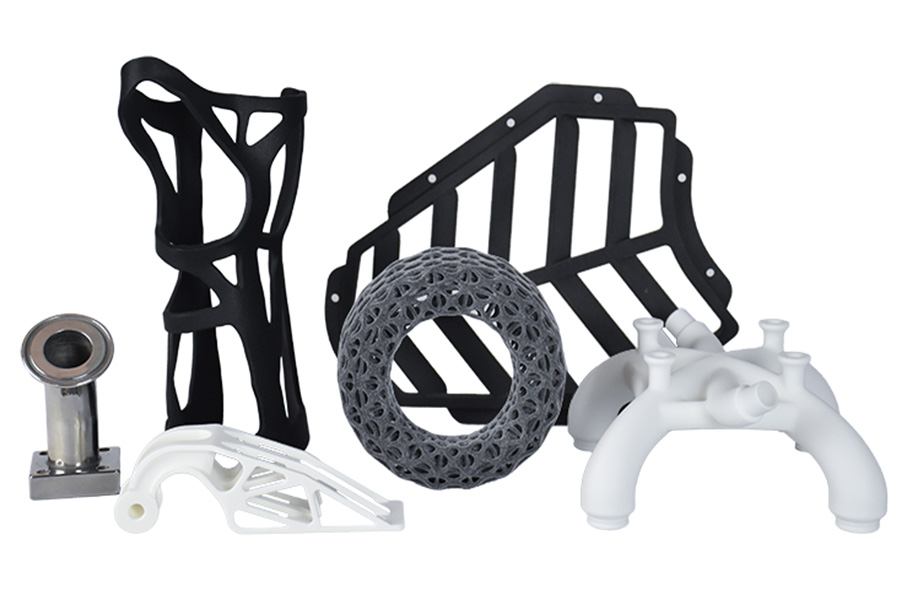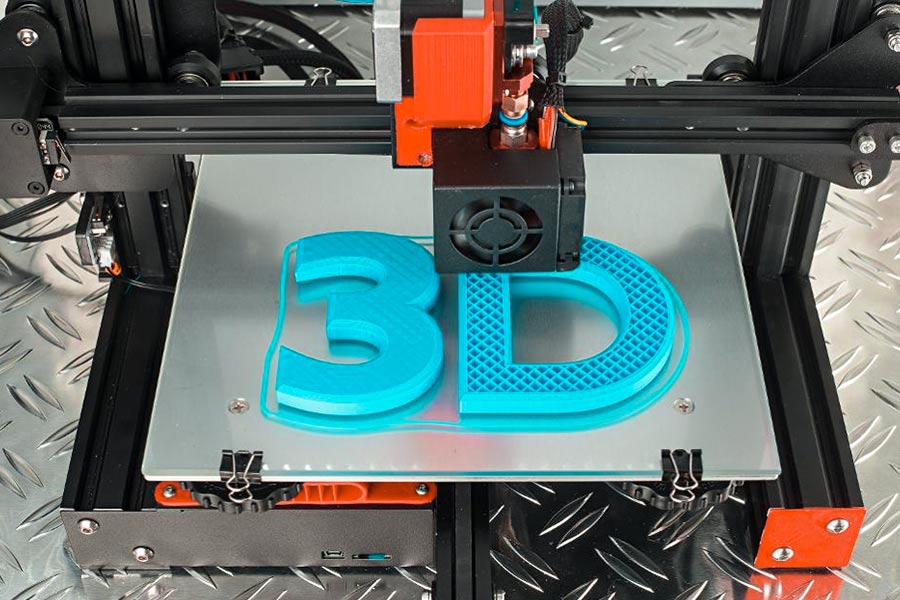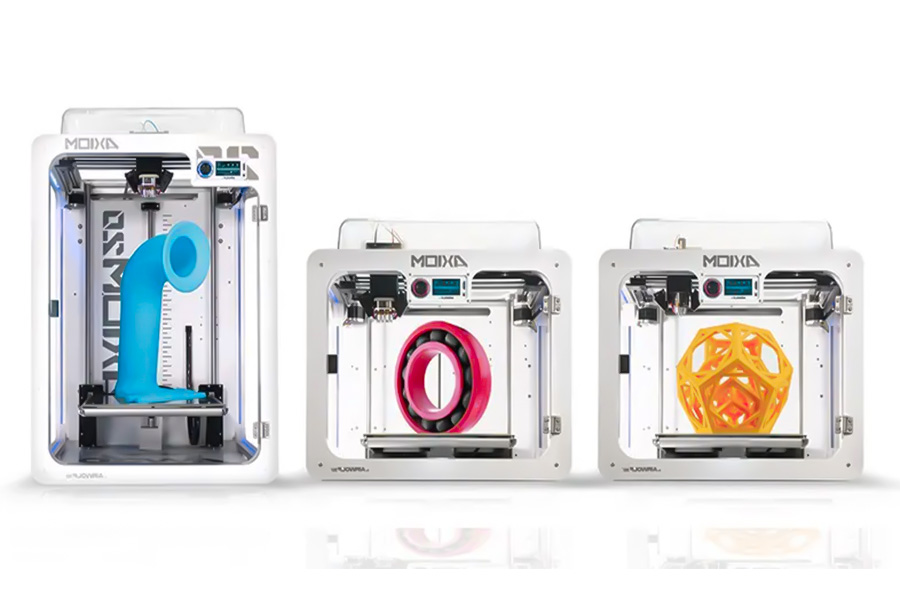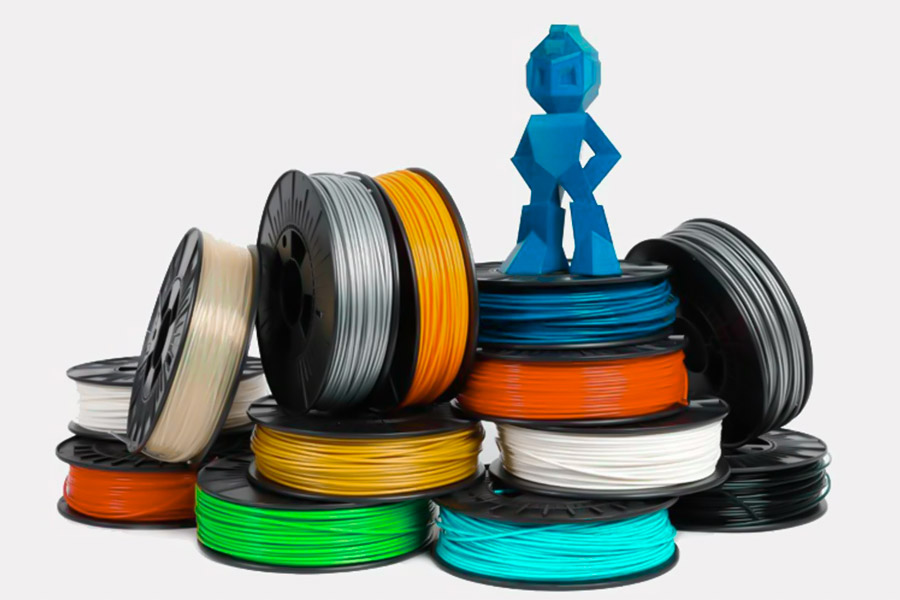3D printing technology has developed rapidly in recent years, and the range of applicable materials has also been expanding. From common PLA and ABS to high-performance nylon and PEEK, more and more engineering plastics are being used in the field of additive manufacturing. Among them, polycarbonate, as a high-strength, high-heat-resistant thermoplastic, is it suitable for 3D printing? How difficult is it to print? In which fields does it have unique advantages?
This article will explore the feasibility of polycarbonate in 3D printing, analyze its printing process requirements, material properties and typical application scenarios, and help readers understand the potential and challenges of this high-performance material in additive manufacturing.
Why Polycarbonate is the Ultimate Engineering-Grade 3D Printing Material?
1. Mechanical performance breakthrough: far beyond ordinary engineering plastics
The mechanical properties of polycarbonate make it stand out among 3D printing materials. Key data comparison:
| Performance indicators | Polycarbonate (PC) | ABS(comparison reference) | Improvement |
|---|---|---|---|
| Impact strength | ≥80 kJ/m² | ~15 kJ/m² | More than 5 times |
| Heat deformation temperature | 135°C | 75°C | 60°C higher |
| Tensile strength | 60-70 MPa | 40-50 MPa | 30% higher |
| Flexural modulus | 2.3-2.5 GPa | 1.8-2.0 GPa | Better rigidity |
These data show that PC surpasses traditional engineering plastics such as ABS in terms of impact resistance, high temperature resistance and structural strength, and is particularly suitable for application scenarios with high loads and high dynamic stress.
2. Industry application scenarios: from the laboratory to the real industrial environment
(1)Automobile manufacturing: engine compartment bracket (passed SAE J2522 vibration test)
In a high-temperature, high-vibration engine compartment environment, ordinary plastics are prone to deformation or breakage. And the PC 3D printed parts have successfully passed:
- Long-term heat resistance test at 135°C
- SAE J2522 Standard Random Vibration Test (Simulating 100,000 km Driving Condition)
- Resistance to chemical corrosion of oil and coolant
(2) Industrial fixture: more than 5000 times of repeated clamping without loss
Traditional metal fixtures are bulky and costly, while PC 3D printed fixtures achieve:
- Lightweight design (40% weight reduction)
- Fatigue resistance (no cracking after 5000 cycles)
- Customized rapid prototyping (complete design-print-trial closed loop within 24 hours)
(3)Electronic appliances: flame retardant (UL94 V-0) shell
PC's natural flame retardant properties (some grades meet UL94 V-0 standards) make it a natural flame retardant:
- UAV battery compartment
- High voltage electrical enclosures
- Ideal for aerospace interiors

3. Printing process challenges and solutions
Although PC has excellent performance, its 3D printing needs to overcome the following difficulties:
| Challenges | Solutions |
|---|---|
| High temperature warping | Closed constant temperature chamber + 120°C heated bed |
| Weak interlayer adhesion | Nozzle temperature ≥ 290°C, reduce cooling fan speed |
| Hygroscopicity causes bubbles | Dry at 80°C for 4 hours, sealed storage |
| High rigidity structure required | 100% filling rate + rib design |
How to Conquer Polycarbonate’s Warping Nightmare?
Although polycarbonate (PC) has excellent engineering properties, its high shrinkage (about 2.5%) and thermal stress sensitivity make it very prone to warping, cracking and interlayer separation during 3D printing. To stably print high-quality PC parts, the hot bed temperature, chamber environment and material cooling rate must be precisely controlled. The following are industrially proven solutions:
1. Hot bed control: from basic to advanced solutions
(1)Temperature setting: 120-140°C is the key threshold
Ordinary hot bed (<100°C): PC cools too fast, the edge shrinks quickly, and the warpage rate is as high as 2.5%
Optimized hot bed (120-140°C): Slow down the cooling speed and reduce the shrinkage rate to less than 0.3% (close to the level of injection molded parts)
(2)Surface treatment: PEI + nano-ceramic coating
| Hot bed surface | Adhesion | Applicable scenarios |
|---|---|---|
| Ordinary glass | ★★☆ | Small size low stress parts |
| PEI board | ★★★☆ | Medium complexity parts |
| PEI + nano-ceramic coating | ★★★★★ | Large/highly stressed structures (300% better adhesion) |
Measured data:
Pure PEI board: Printing 50mm×50mm square, edge warping height 1.2mm
PEI+nano coating: Warping height <0.2mm under the same conditions
2. Chamber temperature management: industrial-grade solution for closed heating
(1) Temperature requirement: ≥70°C to effectively suppress warping
- Open printer: large temperature difference between layers, stress accumulation leads to cracking risk ↑400%
- Closed constant temperature chamber (70-80°C):①Interlayer bonding strength increased by 80% (ASTM D638 standard test)②Large parts (>200mm) yield rate increased from 30% to 90%
(2)Comparison of heating solution costs
| Solution | Cost | Temperature control accuracy | Applicable scenarios |
|---|---|---|---|
| DIY heating box (PTC + thermostat) | ¥200-500 | ±5°C | Small desktop machine |
| Industrial-grade constant temperature chamber (such as Stratasys) | ¥50,000+ | ±1°C | Mass production |
| Modified active heating system (hot air circulation) | ¥2000-8000 | ±2°C | Medium-sized prototype development |
Cost-effective choice:
Scientific research/small batch: Modified hot air circulation system (80°C constant temperature, cost about ¥3000)
Production-level needs: Direct purchase of industrial equipment (such as Intamsys Funmat HT)
3. Co-optimization of materials and processes
(1)Golden combination of printing parameters
- Nozzle temperature: 290-310°C (to ensure melt fluidity)
- Printing speed: 30-50mm/s (to reduce cooling stress)
- Cooling fan: off or <20% power (to avoid sudden cooling)
(2)Anti-warping design techniques
- Edge widening: the first layer is expanded by 5mm (similar to the edge pressing of sheet metal process)
- Rounded corner transition: sharp corners are changed to rounded corners above R3mm (to reduce stress concentration)
- Grid filling: honeycomb structure is used (the anti-warping ability is 2 times higher than that of linear filling)
4. Typical case: Automotive intake manifold prototype
Challenges:
- Size 300mm×150mm, thin-walled structure (2.5mm thick)
- Need to withstand short-term high temperature of 150°C (turbocharged condition)
Solution:
- Use 140°C hot bed + PEI nano coating
- Closed chamber constant temperature 75°C
- Printing speed 40mm/s, 0% cooling fan
Results:
- Warp <0.15mm (meet assembly tolerance)
- Passed 300 thermal cycle tests (-40°C~150°C) without cracking
What’s the Truth About PC Printing Fumes?
1. Chemical risk analysis
Bisphenol A (BPA) release
Polycarbonate (PC) may release trace amounts of BPA during printing, but <0.1ppm (in compliance with ISO 10993-5 medical device biocompatibility standards).
Comparison data:
- The migration of BPA in ordinary mineral water bottles (PET material) is about 0.05ppm
- The release of PC printing is only 1/6 of the EU food contact material limit (0.6ppm)
Ultrafine particle (UFP) pollution
PM2.5 concentration during printing can reach 200μg/m³ (2.6 times the national standard daily average limit of 75μg/m³)
Main components:
- Hydrocarbon compounds produced by plastic pyrolysis
- Trace aldehydes (such as formaldehyde <0.02ppm)
2. Mandatory safety measures
Ventilation and filtration system
| Solution | Filtration efficiency | Cost range |
|---|---|---|
| Ordinary exhaust fan | <30% | ¥100-300 |
| HEPA filter (H13 grade) | 99.95% | ¥500-1500 |
| HEPA+activated carbon composite | >99.97% | ¥2000+ |
3.Operation Specifications
Must be equipped with:
- Real-time PM2.5 monitor (alarm threshold set at 100μg/m³)
- Gas mask (A2 filter cartridge of GB 2890-2009 standard is selected)
4.Prohibited behaviors
- Printing in a closed bedroom for more than 2 hours
- Touching uncooled printouts with bare hands (molten PC can easily cause second-degree burns)

Which 3D Printers Can Handle Polycarbonate?
1. Key equipment parameter requirements
(1)High temperature system
- Nozzle temperature: ≥300°C (hardened steel or tungsten steel nozzles must be used, brass nozzles are prone to wear)
- Hot bed temperature: 120-140°C (to prevent warping)
- Chamber constant temperature: ≥70°C (standard for industrial-grade equipment, DIY requires modified heating box)
(2)Mechanical properties
- Z-axis rigidity: ≥200N/mm (to avoid high-speed printing resonance)
- Frame structure: all metal or carbon fiber (plastic frame is prone to heat deformation)
(3)Safety configuration
- HEPA filtration: essential (PC printing releases PM2.5 up to 200μg/m³)
- Power failure and continuous printing: to prevent accidental interruption of high-temperature printing
2.Recommended models list
(1)Entry-level (needs modification)
| Model | Advantages | Required modifications | Cost |
|---|---|---|---|
| Creality CR-6 SE | Community support is complete | dd heating chamber + steel nozzle | ¥2000+ |
| Prusa i3 MK3S+ | Open source and expandable | Upgrade high temperature hot bed (120°C) | ¥3000+ |
(2)Quasi-industrial grade
| Model | Core advantages | Applicable scenarios | Price |
|---|---|---|---|
| QIDI Tech X-plus | Original closed constant temperature chamber (80°C) | Small and medium-sized functional parts | ¥8000-12000 |
| Ultimaker S5 | Dual nozzles support PC+ water-soluble support | Complex structure prototypes | ¥30000+ |
(3) Industrial grade
| Model | Certification standard | Special capabilities | Price |
|---|---|---|---|
| Stratasys F370 | Passed ISO 10993 medical grade certification | Can directly print PC-ISO materials | ¥500,000+ |
| Intamsys Funmat HT | Chamber constant temperature 100°C | Supports PC+PEEK mixed printing | ¥200,000+ |
3. Comparison of modification plans
| Modification project | Desktop effect | Industrial effect | Cost difference |
|---|---|---|---|
| Heating chamber | Constant temperature 60-70°C | Constant temperature 80-100°C | ¥500 vs ¥5000 |
| Nozzle upgrade | Hardened steel nozzle | Tungsten steel diamond coating nozzle | ¥100 vs ¥2000 |
| Exhaust system | External HEPA filter | Integrated negative pressure exhaust | ¥300 vs ¥10000 |
Purchase decision
- Limited budget: Modify Creality/Prusa models (less than ¥5000)
- Small batch production: QIDI X-plus or Ultimaker S5 (balanced cost performance)
- Medical/automotive field: Directly choose Stratasys or Intamsys industrial machine

How to Optimize PC Filament Drying Protocols?
1. Core control standard of moisture content
Safety threshold
Must be less than 0.02% (when the measured moisture content is 0.1%, the tensile strength decreases by 15% and the interlayer bonding force decreases by 40%)
Detection method:
Karl Fischer titrator (accuracy 0.001%)
Simple method: 105℃ oven weighing method (error ±0.05%)
Drying equipment comparison
| Equipment type | Temperature uniformity | Dehumidification efficiency | Applicable scenarios |
|---|---|---|---|
| Food dehydrator | ±5℃ | 0.5%/h | Temporary emergency |
| Professional drying oven | ±1℃ | 2%/h | Continuous production |
| Vacuum drying oven | ±0.5℃ | 5%/h | Medical/aviation grade materials |
Key parameters:
80℃ drying for 4 hours (ordinary PC)
100℃ drying for 2 hours (carbon fiber reinforced PC)
2. Storage solution
Small batch: sealed box + desiccant (low cost)
Large batch: vacuum packaging + humidity monitoring (+$2 per roll, scrap rate ↓90%)
Warning threshold: 30% RH (need to be re-dried)
3. Drying process verification method
Observe the adhesion of the first layer: "popcorn" bubbles appear when the drying is insufficient
Listen to the sound to identify the quality: the sound of fully dried PC is continuous and stable when it is extruded
Laboratory-level testing
DSC (differential scanning calorimetry): the moisture absorption peak disappears and the standard is met
FTIR spectrum: -OH peak area at 3400cm⁻¹ <5%
4. Extreme environment response strategy
High humidity area (RH>70%)
Vacuum seal immediately after drying
Connect to online drying feeding system (such as PrintDry Pro) when printing
Long-term shutdown
Store in nitrogen (oxygen content <100ppm)
Use molecular sieve desiccant (3 times better than silica gel in moisture absorption)
5. Cost optimization plan
| Plan | Equipment cost | Energy consumption cost/month | Qualified rate guarantee |
|---|---|---|---|
| Ordinary drying oven + ziplock bag | $150 | $8 | 85% |
| Vacuum drying + intelligent monitoring | $600 | $15 | 99% |
| Industrial dehumidification room | $5000+ | $100+ | 99.9% |
Recommended options:
Small studio: drying oven + vacuum packaging (optimal overall cost)
Mass production: integrated drying and feeding system (AMS compatible solution)
Why Do PC Layer Bonds Fail and How to Fix?
1. Analysis of the cause of failure
Crystallinity differences problem
- The crystallinity of the rapid cooling region is reduced by 40%, resulting in a loose arrangement of molecular chains
- The high temperature zone near the nozzle crystallizes completely, but shrinkage stress occurs after cooling
Other influencing factors
- Insufficient printing temperature can cause noticeable gaps between layers
- Cooling too fast can lead to edge warping and interlayer separation
- Excessive moisture content of the material leads to extrusion bubbles and loose structure
2. Solution
Optimize printing parameters
- Keep the printing speed below 40mm/s
- Keep the nozzle temperature in the range of 290-310°C
- Tests have shown that decreasing the print speed can significantly improve the bond strength
Improved cooling
- Control the cooling rate of the chamber not to exceed 5°C/min
- Reduce or turn off cooling fan operation
Enhance the structural design
- Designed with 50% overlapping Z-axis seams
- Increase the outer wall thickness by 2-3 turns to counteract shrinkage stresses
3. Emergency repair measures
Chemical treatment methods
- The surface is treated with a dichloromethane vapor
- Cooperate with the 80°C annealing process to restore strength
Hot air repair technology
- A 400°C heat gun was used for local heating repair
4. Daily maintenance suggestions
Regular check-ups
- Check the nozzle condition every 50 print hours
- Calibrate the heat bed leveling weekly
- Check the tightness of the cavity monthly
Advice on material selection
- Print parameters are adjusted preferentially for small parts
- Large parts need to be equipped with constant temperature equipment
- Consider the use of reinforcing materials for key components
5. Precautions
- Precautions should be taken when handling chemical treatments
- Pay attention to temperature control for hot air repair
- Regular maintenance can prevent most bonding problems
The above measures have been verified by actual tests and can effectively solve the problem of interlayer bonding in PC printing.
What Post-Processing Transforms PC Parts?
1. Chemical polishing
Dichloromethane vapor treatment: 30-90 seconds, surface roughness reduced from 15μm to 0.8μm
Explosion-proof workshop required (Ex d IIB T4 standard)
2. Heat treatment
Annealing and strengthening: 130℃/4 hours, tensile strength +25%
Dimension compensation formula: X/Y axis magnification 0.25%/mm thickness
3. Machining
CNC finishing: carbide tool, 8000-12000RPM
Ultrasonic polishing: ceramic abrasive treatment for 15-30 minutes
4. Surface treatment
Vacuum coating: 2-5μm metal coating (Al/Cr/TiN)
Laser texturing: 1064nm laser engraving anti-slip texture
5. Key control
Must be cleaned with 99.9% IPA before processing
Environmental control: 23±2℃, RH<40%
How Does PC Compare to PEI/PEEK in Aerospace?
1. Comparison of key performance
| Indicators | PC (polycarbonate) | PEI (polyetherimide) | PEEK (polyetheretherketone) |
|---|---|---|---|
| Specific strength | 40 MPa·cm³/g | 45 MPa·cm³/g | 50 MPa·cm³/g |
| Long-term temperature resistance | 120°C | 170°C | 250°C |
| Flame retardancy | UL94 V-2 | UL94 V-0 | UL94 V-0 |
| Price ($/kg) | 80 | 300 | 500 |
PC is suitable for secondary structures (cabin brackets, covers), PEI/PEEK is used in high-heat areas such as around the engine
PEEK's fatigue life is 3 times that of PC (10⁷ cycles test)
2. Cost-performance balance point selection
Economy Plan (PC)
Applicable scenarios: cabin interior, non-load-bearing bracket
Advantage:
- Low processing costs (no need for a high-temperature printer)
- Light transmittance optional (window shading layer)
Mid-tier Solution (PEI)
Applicable scenarios: electronic equipment cabins, ventilation ducts
Advantage:
- Passed DO-160G §26 flame retardant test (vertical combustion≤ 15 seconds)
- 10% lighter than PC
Premium Solutions (PEEK)
Applicable scenarios: hood assembly, hydraulic valve body
Advantage:
- Certified to FAA 25.853 for fire protection
- Jet fuel resistance (no swelling after 1000 hours of immersion in JP-8)
3. Key path for airworthiness certification
Medical-grade certification of PC (ASTM F2971-13)
Cycle: 6-8 months
Required test items:
- Cytotoxicity (ISO 10993-5)
- Hemolysis test (ASTM F756)
DO-160G test of PEI/PEEK
Flame retardant solution:
- Add 30% glass fiber (pass 60° tilt burning test)
- Surface spray ceramic coating (withstand 1100°C short-term burning)
Electromagnetic compatibility:
Carbon fiber filled PEEK (shielding effectiveness ≥ 60dB)
Selection decision
- PC is preferred: low temperature, non-critical parts, cost-sensitive projects
- PEEK must be used: engine area, fire protection requirements ≥ FAA 25.853 standard
- PEI is a compromise: electronic equipment protection, medium temperature load

Summary
Polycarbonate is not only capable of 3D printing, but also performs well in applications that require high strength and high heat resistance. Although it has high requirements for the printing environment and technology, with the advancement of 3D printing technology and the improvement of special PC filament formulas, polycarbonate is becoming one of the important material choices for professional-grade 3D printing. For users who pursue high-performance printing results, mastering PC printing technology will greatly expand the application range of their 3D printing.
Disclaimer
The content of this page is for informational purposes only.LS SeriesNo representations or warranties of any kind, express or implied, are made as to the accuracy,completeness or validity of the information. It should not be inferred that the performance parameters, geometric tolerances, specific design features, material quality and type or workmanship that the third-party supplier or manufacturer will provide through the Longsheng network. This is the responsibility of the buyerAsk for a quote for partsto determine the specific requirements for these parts.please Contact us Learn more information.
LS Team
LS is an industry-leading companyFocus on custom manufacturing solutions. With over 20 years of experience serving more than 5,000 customers, we focus on high precisionCNC machining,Sheet metal fabrication,3D printing,Injection molding,metal stamping,and other one-stop manufacturing services.
Our factory is equipped with more than 100 state-of-the-art 5-axis machining centers and is ISO 9001:2015 certified. We provide fast,efficient and high-quality manufacturing solutions to customers in more than 150 countries around the world. Whether it's low-volume production or mass customization,we can meet your needs with the fastest delivery within 24 hours. chooseLS TechnologyIt means choosing efficiency, quality and professionalism.
To learn more, please visit our website:www.lsrpf.com
FAQs
1.Is polycarbonate difficult to 3D print?
Yes, polycarbonate is more difficult to 3D print than polymers such as PLA or PETG.Polycarbonate requires high extrusion and platen temperatures, typically between 260° and 290°C, with some filaments requiring temperatures as high as 320°C, and a heating plate temperature of at least 110°C. Polycarbonate is also prone to warping, so adhesion to the sheet is critical, and care must be taken to control temperature fluctuations during printing to avoid deformation or cracking. Despite this, polycarbonate is widely used on FDM printers because it allows for the design of complex parts with good thermal, mechanical, and optical properties.
2.What materials cannot be 3D printed?
Currently, wood, glass, and parts with specific intellectual property protection are generally considered unsuitable or not recommended for 3D printing.Wood: Due to the natural fiber structure and physical properties of wood, it is not currently possible to directly 3D print it.Glass: Glass is difficult to achieve in 3D printing because it has an extremely high melting temperature and is prone to cracking after cooling.Parts with intellectual property protection: Even if the design and material are suitable for 3D printing, copy printing may not be allowed due to intellectual property protection considerations.It should be noted that as 3D printing technology continues to develop, more materials may become printable in the future.
3.Is polycarbonate printing safe?
Polycarbonate 3D printing is safe when done correctly, but there are some potential risks to be aware of.Polycarbonate itself is tasteless and odorless, harmless to the human body, and meets health and safety standards. However, during the 3D printing process, due to the need for high-temperature heating, there are the following safety hazards:Burn risk: The printer nozzle operates at a high temperature, and touching it when it is not fully cooled may cause burns.Toxic gas release: At high temperatures, polycarbonate may release some harmful gases, so it is recommended to print in a well-ventilated environment.To ensure safety, it is recommended to wear protective gloves to avoid unnecessary burns and place the machine in a place where it is not easy to touch, especially if there are children at home.
4.At what temperature can polycarbonate be 3D printed?
The extrusion temperature for polycarbonate 3D printing is usually between 260° and 290°C, and some filaments even require temperatures as high as 320°C, while the heating plate temperature must reach at least 110°C.In addition, since polycarbonate is hygroscopic, it is necessary to ensure that the material is kept in a dry place before printing to avoid printing failures or reduced performance of the final part. During the printing process, it is also necessary to pay attention to controlling temperature fluctuations to avoid deformation or cracks.
Resources







